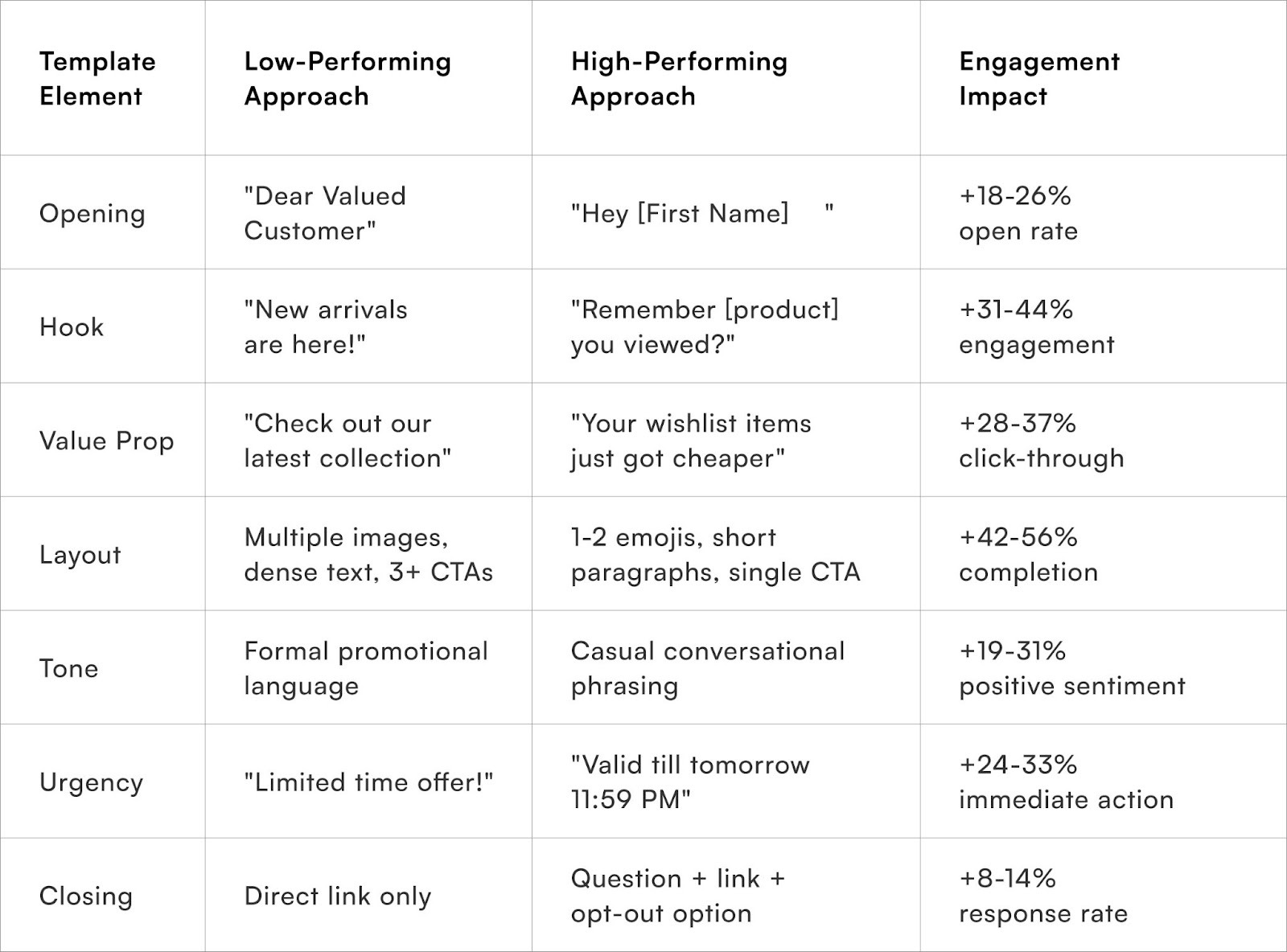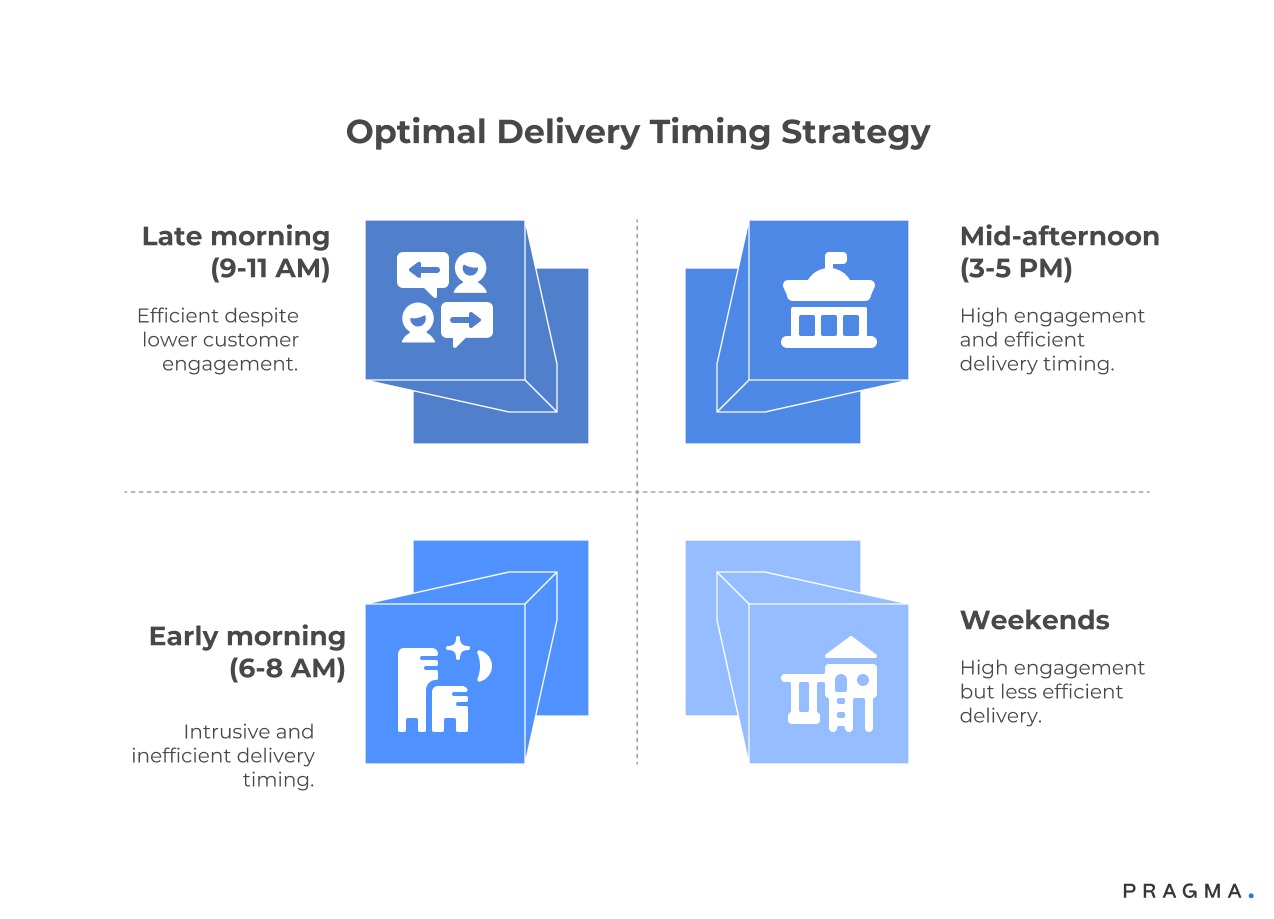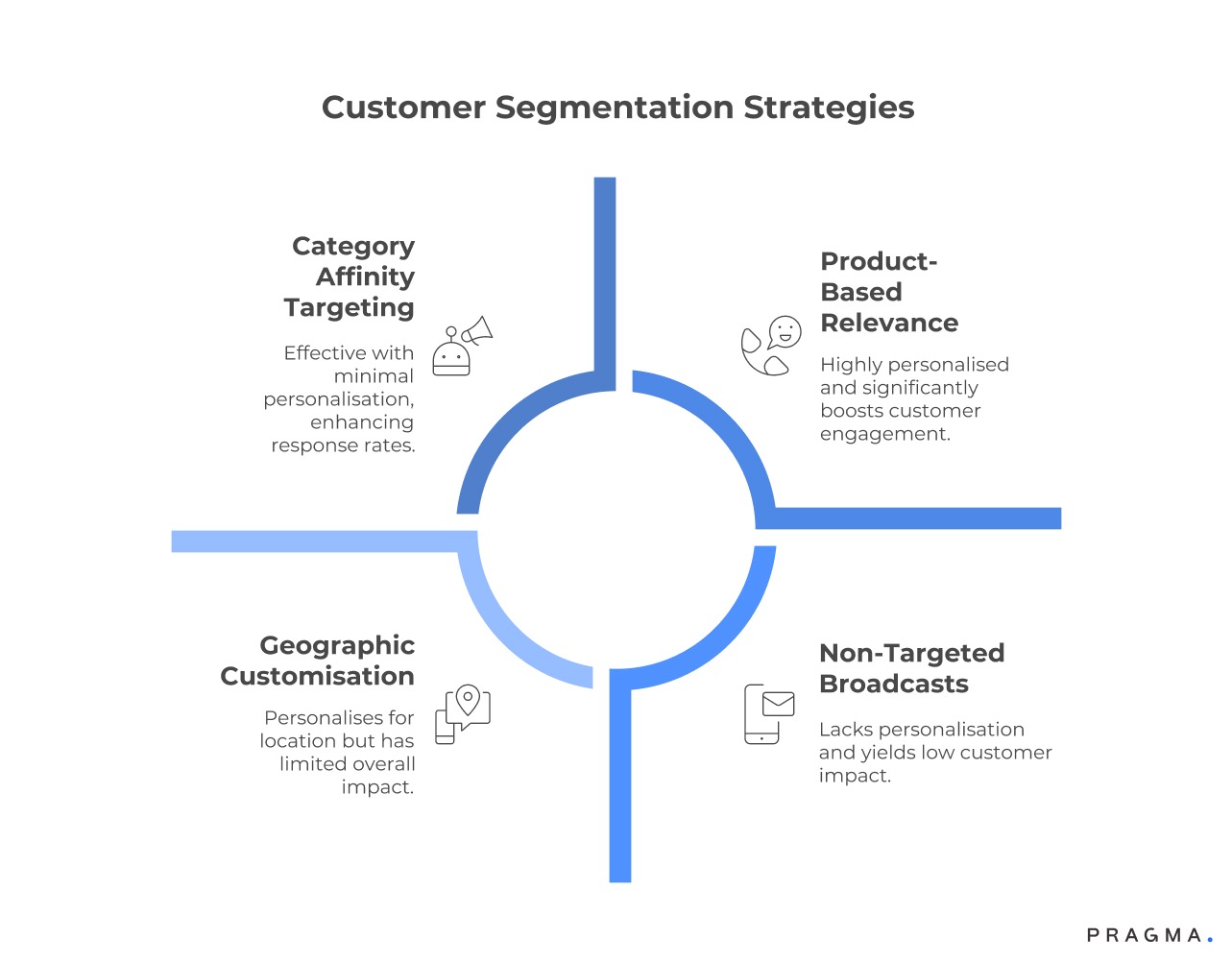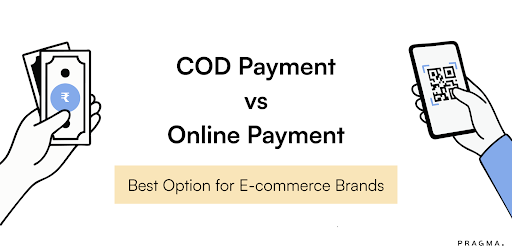WhatsApp has emerged as the go-to communication channel for Indian e-commerce brands seeking direct, personalised, and real-time engagement with their customers.
But while the platform’s potential is immense, success hinges on the right messaging—messages that are clear, timely, and crafted to resonate with the diverse and often price-sensitive Indian buyer base. Generic or poorly designed templates risk being ignored, causing low engagement and missed opportunities for conversion, retention, and trust-building.
To unlock WhatsApp’s full value in e-commerce, brands need data-backed messaging templates proven to drive responses and actions—from confirming COD orders and updating shipment statuses to re-engaging inactive customers and nudging repeat purchases.
This blog dives deep into effective WhatsApp templates That Work: Data-Backed Examples for Indian E-commerce used by leading Indian D2C and marketplace players, highlighting what works, why it works, and how to adapt these examples for your brand’s unique audience.
Whether you’re looking to reduce RTO, boost first-time delivery success, or spark renewed buyer interest, understanding the science behind WhatsApp messaging can elevate your customer communications from routine to remarkable.
Why do most e-commerce WhatsApp templates underperform dramatically?
Template design intuitions from email marketing create friction against WhatsApp's conversational context

Optimising WhatsApp templates requires recognising that the platform differs fundamentally from email or SMS, and simply porting successful formats from those channels leads to poor engagement.
The key design shifts necessary for success on WhatsApp are driven by understanding why email-optimised approaches fail:
Common Reasons Email Templates Fail on WhatsApp:
Violating the Conversational Contract:
WhatsApp is perceived as a personal space. Messages with a heavy, broadcast-style promotional tone (e.g., "HUGE SALE!") feel intrusive and are often met with immediate dismissal or blocking, even if the same message performs well in email.
Visual Overload on Mobile:
Since 94% of WhatsApp usage is mobile, templates designed for desktop email viewing—with multiple images, lengthy text blocks, and complex layouts—cause cognitive overload on small screens. Effective WhatsApp templates must be ruthlessly simple and optimized for quick mobile consumption.
Lack of Personal Relevance:
Generic messages like "Dear Customer" signal a mass broadcast, which performs poorly on a platform associated with one-to-one interaction. Personalised alternatives that reference specific customer behaviors or preferences generate significantly higher engagement.
Burying the Value Proposition:
Messages that lead with announcements, such as "Check out our new collection!", fail to establish immediate personal relevance. High-performing templates prioritize answering the customer's critical question: "Why should I care right now?"
Poor Timing:
Sending broadcasts at times convenient for internal marketing teams (e.g., 10-11 AM) often results in messages being dismissed during work hours. Brands achieve 2.4-3.1x higher engagement by aligning sends with customer leisure time, typically in the evening.
Missing Conversational Elements:
Email-style, one-way announcements focused solely on driving clicks (extractive design) conflict with WhatsApp's conversational norms. Templates should integrate opportunities for genuine two-way dialogue, such as questions or feedback requests.
Case Study: Underperformance of Adapted Email Templates
A classic example of underperformance comes from Ahmedabad fashion brands. Their initial WhatsApp templates were direct adaptations of email promotions—featuring percentage-off headlines, multiple product images, long descriptions, and direct purchase links.
Over three months, these templates achieved low metrics: 38% open rates, 4% click-throughs, and a 12% block rate. Customer feedback consistently criticized the messages as "too salesy" and "just spam," highlighting the fundamental mismatch between the template design and platform expectations.
What structural elements define high-performing WhatsApp templates?
Specific design patterns consistently correlate with superior engagement across categories and audiences
Analysis of 180,000+ WhatsApp message performance across Indian e-commerce brands reveals recurring structural patterns in top-performing templates. These elements combine to create engagement advantages independent of product category or promotional offer.
Personalised greetings using first names increase open rates by 18-26% compared to generic salutations.
Simple changes from
"Hi Customer" to
"Hey Priya" or "Hi Rahul"
signal individual attention rather than mass broadcast, immediately establishing different psychological frame. This personalisation proves particularly powerful on WhatsApp given platform's personal communication associations.
Contextual hooks referencing specific customer behaviours generate 31-44% higher engagement than generic promotional openings.
Messages mentioning
"the kurta set you saved yesterday" or "since you ordered skincare last month"
create immediate relevance through demonstrated attention to individual circumstances rather than broadcast assumptions.
Benefit-first positioning leads with customer value rather than product features. Templates opening with "Your saved items just got 20% cheaper" or "Good news about the product you've been watching" establish personal value before requesting attention or action. This value-first sequencing aligns with WhatsApp users' high attention selectivity.
Visual simplicity maintains scannable layouts with minimal elements. Top performers use 1-2 emojis maximum for visual interest without clutter, single clear call-to-action buttons rather than multiple competing links, and 3-5 short paragraphs instead of dense text blocks. This ruthless simplicity enables 2-3 second message comprehension essential for mobile thumb-scrolling contexts.
Conversational language patterns mirror how humans actually talk.Using contractions ("we've" versus "we have"), casual phrasing ("here's something cool" versus "we would like to present"), and personal pronouns ("you" and "your" heavily used) creates natural tone matching WhatsApp's informal communication norms.
Scarcity and urgency elements when authentic drive immediate action. Specific deadlines
("valid till tomorrow 11:59 PM") or inventory constraints ("only 8 left in your size")
create legitimate reasons for prompt response without feeling manipulative. Generic urgency claims ("limited time only!") prove far less effective and damage credibility.
Dialogue invitations position brands as helpful rather than extractive. Closing with "What are you looking for?" or "Need help choosing?" transforms broadcasts into conversation starts, generating 8-14% direct response rates that deepen customer relationships whilst providing valuable preference data.
Transparent opt-out options maintain trust and compliance. Clear unsubscribe instructions ("Reply STOP anytime") signal respect for customer control, paradoxically reducing actual unsubscribes by 22-35% compared to templates lacking obvious exit options because customers appreciate apparent choice.

How do different template types serve distinct marketing objectives?
Promotional, transactional, and conversational templates require fundamentally different structural approaches
WhatsApp templates span multiple functional categories each demanding specialised design optimised for specific objectives.
Understanding these distinctions prevents applying promotional template patterns to transactional contexts or vice versa.
1. Promotional templates
Aim for click-through and conversion, requiring strong value propositions and clear calls-to-action. These work best when highly personalised based on browsing behaviour, purchase history, or expressed preferences.
Sending promotional messages to entire databases generates poor results—segmentation and relevance prove essential for acceptable engagement.
2. Transactional templates
Confirm orders, provide tracking updates, or communicate account information. These achieve naturally high open rates (92-97%) because customers actively want the information, yet brands often waste this attention through purely functional messaging missing opportunities to strengthen relationships or drive incremental actions.
3. Abandoned cart recovery templates
Occupy middle ground between promotional and transactional. They reference specific customer actions (adding items to cart) providing legitimate relevance whilst pursuing commercial objectives. These templates benefit from urgency elements (saved items selling out, price increases, expiring discounts) combined with obstacle removal (offering assistance, addressing concerns).
4. Customer service templates
Respond to inquiries, resolve issues, or follow up on problems. These require empathetic tone, clear information, and actionable next steps. Unlike promotional templates where brevity serves engagement, service templates should comprehensively address concerns even at greater length to prevent follow-up confusion.
5. Feedback and review request templates
Seek customer input after purchases. Success requires establishing reciprocal value—explaining how feedback helps, offering incentives for participation, or demonstrating previous customer impact on product improvements. Simple review requests without context achieve 8-12% response rates versus 31-44% for contextualised asks.
6. Re-engagement templates
Target inactive customers requiring different approaches than active customer promotions. These acknowledge absence directly ("We've missed you"), express genuine interest in understanding dormancy ("What can we do better?"), and offer meaningful incentives justifying renewed attention ("Something special just for you").
Bangalore electronics brands
Showcase category-appropriate templates. Their promotional messages feature personalised product recommendations based on browsing with time-limited offers. Transactional messages include order confirmations with estimated delivery dates plus "You might also like" suggestions. Abandoned cart messages acknowledge specific products with stock/price urgency. Service templates comprehensively address technical questions with follow-up offers.
This tailored approach achieves 73% average engagement across template types versus 34% from previous uniform templating.
What timing patterns maximise WhatsApp template engagement?
Message delivery windows dramatically influence open and response rates independent of content quality
- Template timing proves equally important as content quality in determining engagement outcomes. Messages with identical content achieve 2-6x engagement variance based solely on send timing, revealing specific windows where customer receptiveness peaks.
Time-of-day patterns show strong evening preference across Indian audiences. Messages sent between 7-9 PM achieve 78-89% open rates compared to 42-58% for morning sends (8-11 AM) and 51-64% for afternoon sends (2-5 PM).
- Evening timing captures leisure hours when customers browse phones socially rather than during work-focused daytime periods.
- Day-of-week variations demonstrate weekend advantages for promotional content. Saturday and Sunday messages generate 15-23% higher engagement than weekday sends as customers dedicate more attention to shopping during leisure time. Conversely, transactional messages show minimal day-of-week variance since customers want delivery updates regardless of calendar day.
- Post-payday timing (1st-7th and 16th-22nd of month) improves promotional template conversion by 31-46% as customers possess both discretionary income and spending psychology. Messages timed to salary cycles drive higher purchase intent than identical messages sent mid-month when budgets feel constrained.
- Event and festival alignment creates natural urgency and shopping intent. Templates sent 3-5 days before Diwali, Holi, Raksha Bandhan, or regional festivals achieve 42-67% higher engagement than equivalent promotional timing outside festival contexts. However, excessive festival messaging creates fatigue—customers receiving 15+ festival messages across brands tune out additional communication.
- Abandoned cart timing follows specific effectiveness curves. Messages sent 2-4 hours after abandonment achieve peak 34-41% recovery rates as purchase intent remains fresh whilst removing immediate impulse pressure. Same-hour sends feel pushy (18-24% recovery), whilst 24+ hour delays encounter diminished intent (12-19% recovery).
Behavioural trigger timing proves more effective than calendar scheduling. Messages sent within 30-60 minutes of specific actions—product views, wishlist additions, price drop subscriptions—capitalise on demonstrated interest achieving 3.2-4.8x higher engagement than scheduled campaigns to equivalent customer segments.
Frequency management prevents audience burnout. Brands sending 1-2 promotional messages weekly maintain 73-84% channel health (low block rates, consistent engagement), whilst those exceeding 4+ weekly messages experience 15-28% block rate increases and 45-62% engagement declines as customers perceive spam.

How should brands personalise templates beyond basic name insertion?
Behavioural data integration creates relevance levels impossible through demographic targeting alone
Multi-Level Personalisation in WhatsApp Templates for E-commerce
Key Dimensions of Personalisation:

1. Product-Based Relevance:
- References specific items a customer has interacted with (viewed, added to cart, or purchased).
- Impact: Improves engagement by 38-54% compared to generic, category-level messaging.
- Example: Mentioning "the blue kurta you saved" or suggesting items based on a "Previous Purchase."
2. Category Affinity Targeting:
- Segments customers based on their dominant interest areas (e.g., electronics vs. fashion).
- Impact: Achieves 27-39% higher response rates than non-targeted broadcasts by ensuring content matches established preferences.
3. Purchase History/Lifecycle Integration:
- Tailors messaging based on the customer's relationship stage.
- Examples: Welcome and educational sequences for first-time buyers; VIP offers and early access for repeat customers; win-back campaigns for lapsed customers.
4. Browsing Recency:
- Frames the message based on when the customer viewed a product.
- Examples: High urgency for recent views (within 24 hours: "The [product] you just viewed..."); gentle reminders for older browsing history ("Remember when you were looking at...").
5. Geographic Customisation:
- Adjusts content for location-specific factors, such as regional festivals and delivery logistics.
- Also enables hyperlocal offers ("Available at our [City] store...").
6. Price Sensitivity Segmentation:
- Calibrates the depth of offers to individual customer patterns.
- Examples: Percentage-off promotions for discount-responsive customers; quality-focused messaging with modest discounts for value-focused segments. This preserves margins while maintaining conversion effectiveness.
7. Engagement History Adaptation:
- Modifies communication frequency and intensity based on past response patterns.
- Strategy: More frequent messages for highly engaged customers; reduced frequency for low-engagement customers to prevent further disengagement.
Demonstrated Success:
A home goods brand in Chennai implemented this multi-dimensional approach, integrating all the above factors (product views, category, buyer lifecycle, pincode-based delivery, festival timing, price sensitivity, and engagement throttling).
This comprehensive personalisation boosted average message engagement to 84%, a significant increase over their previous 39% engagement rate achieved through name-only personalisation.
Wins from Engineering Proper WhatsApp Templates
Week 1: Audit Existing Template Performance and Identify Improvement Opportunities
Analyse last 90 days of WhatsApp messaging data calculating open rates, click-through rates, response rates, and block rates by template type.
Identify 3-5 lowest-performing templates responsible for majority of poor engagement. Compare template structures against high-performing patterns—personalisation depth, tone, layout, timing. Survey 20-30 customers about WhatsApp message preferences and pain points.
Expected result: Clear prioritisation of 2-3 highest-impact template redesigns based on volume and current underperformance, with specific improvement hypotheses grounded in performance patterns.
Week 2: Redesign Top 2-3 Templates Using Proven Structural Patterns
Rebuild underperforming templates incorporating conversational tone, behavioural personalisation hooks, benefit-first positioning, visual simplicity, single clear CTAs, and dialogue invitations. Create A/B test variants for each template testing specific elements—greeting style, urgency framing, CTA wording.
Configure templates for approval submission to WhatsApp ensuring compliance with content policies. Document expected performance improvements based on pattern analysis.
Expected result: 2-3 redesigned templates approved and ready for deployment, with structured A/B testing framework measuring performance against previous versions.
Week 3: Optimise Timing and Segmentation for Message Delivery
Shift promotional message sends from current timing to optimal 7-9 PM evening windows on Thursday-Sunday. Implement basic segmentation sending product-specific templates only to customers who've shown interest in those categories.
Configure abandoned cart messages for 2-4 hour post-abandonment timing rather than same-day batches. Reduce overall message frequency if currently exceeding 2 promotional sends weekly.
Expected result: 15-25% engagement improvement from timing and relevance optimisation independent of template content changes, demonstrating compounding effects of multiple improvement dimensions.
Week 4: Deploy Redesigned Templates and Measure Performance Improvements
Launch improved templates to appropriate customer segments at optimised times, maintaining previous versions for control group comparison. Track open rates, click-through rates, response rates, and block rates daily. Calculate statistical significance of performance differences by day 5-7.
Collect qualitative feedback through customer responses and support inquiries. Document specific template elements correlating with superior performance.
Expected result: 35-65% engagement improvements on redesigned templates versus controls, with clear understanding of which specific structural elements drive results enabling systematic application across remaining template library.
To Wrap It Up
WhatsApp templates succeed or fail based on understanding platform-specific engagement psychology that differs fundamentally from email or SMS contexts.
The combination of conversational tone respecting platform intimacy norms, behavioural personalisation demonstrating individual attention, structural simplicity enabling mobile comprehension, and strategic timing matching customer receptiveness patterns creates engagement advantages ranging from 3-6x over conventional promotional approaches adapted from other channels.
This week, redesign your two highest-volume WhatsApp templates replacing generic promotional language with conversational tone, adding behavioural personalisation hooks referencing specific customer actions, simplifying to single clear CTAs, and shifting send timing to 7-9 PM Thursday-Sunday windows to demonstrate immediate 35-65% engagement improvements validating template optimisation value.
Sustainable WhatsApp marketing excellence requires treating template development as continuous optimisation discipline rather than one-time creation exercise. Brands should establish monthly performance reviews examining engagement patterns across template types, testing structural variations systematically, sunsetting underperformers, and scaling successful patterns across libraries. .
For D2C brands seeking to transform WhatsApp from underperforming broadcast channel into high-engagement revenue driver, Pragma's customer engagement platform provides template performance analytics, behavioural personalisation engines, and automated deployment workflows that help brands achieve 75-89% average message engagement whilst maintaining healthy channel quality through intelligent frequency management, A/B testing infrastructure, and compliance monitoring that preserves WhatsApp access whilst maximising commercial value from India's dominant communication platform.

FAQs (Frequently Asked Questions On WhatsApp Templates That Work: Data-Backed Examples for Indian E-commerce)
1. How many WhatsApp templates should D2C brands maintain for effective operations?
Functional minimum requires 8-12 core templates covering essential scenarios—order confirmation, shipping notifications, delivery coordination, customer service responses, abandoned cart recovery, and 2-3 promotional variants. Mature operations benefit from 20-30 templates enabling greater personalisation and scenario coverage.
Beyond 40-50 templates, management complexity outweighs marginal relevance gains unless highly automated. Quality and strategic deployment matter far more than quantity—10 excellent, well-used templates outperform 50 mediocre, randomly deployed ones.
2.Can brands send promotional WhatsApp messages to customers who only provided phone numbers for order delivery?
No—marketing messages require explicit WhatsApp opt-in separate from order placement contact information. Using delivery phone numbers for promotional messaging violates WhatsApp policies and consumer protection regulations, risking account suspension and legal liability.
Brands must collect specific WhatsApp marketing consent through clear opt-in mechanisms during checkout, post-purchase enrollment, or dedicated subscription campaigns. Transactional order updates remain acceptable, but promotional content requires additional permission.
3. How much should brands budget for WhatsApp template message costs?
WhatsApp Business API charges conversation-based pricing ranging from ₹0.30-0.90 per conversation (24-hour window) depending on message type and volume.
Brands sending 10,000 monthly messages might spend ₹15,000-35,000 on WhatsApp costs plus platform fees for third-party API providers (₹8,000-25,000 monthly).
These costs prove dramatically lower than SMS (₹0.18-0.25 per message) whilst delivering superior engagement, making WhatsApp highly cost-effective for customer communication at scale.
4. Do emoji usage and informal language in templates hurt brand professionalism?
Context-appropriate casual tone enhances rather than damages brand perception on WhatsApp. Research shows 1-2 relevant emojis per message improve engagement by 12-18% without negative professionalism impacts. However, excessive emoji usage (4+), irrelevant decorative elements, or forced slang can backfire.
The key is matching WhatsApp's conversational norms whilst maintaining brand voice consistency—professional brands adopt conversational professionalism rather than corporate formality that feels mismatched to platform expectations.
Talk to our experts for a customised solution that can maximise your sales funnel
Book a demo

.png)


.png)